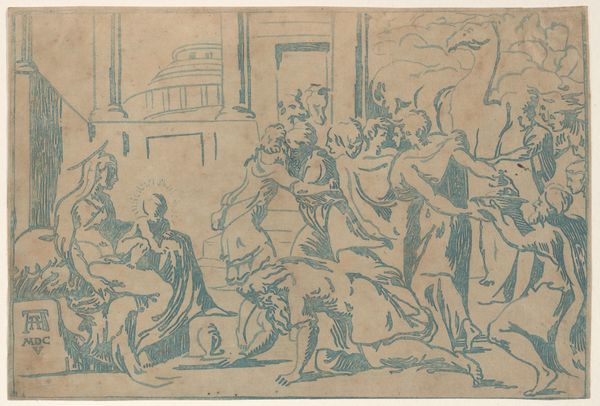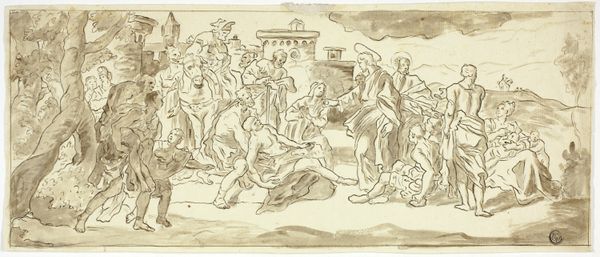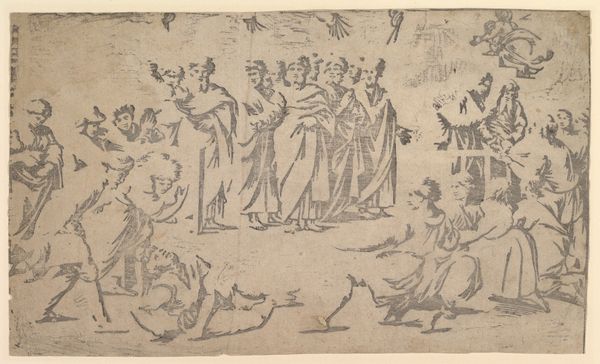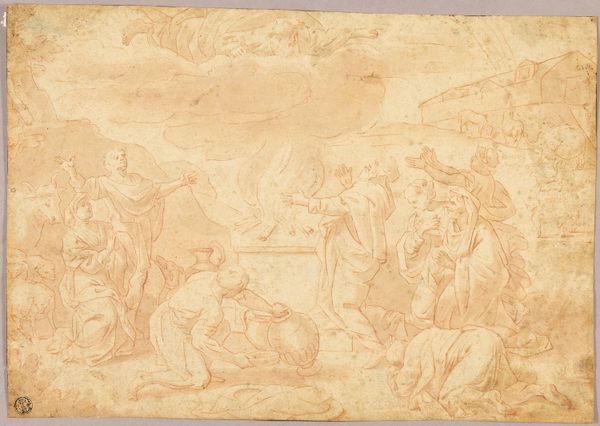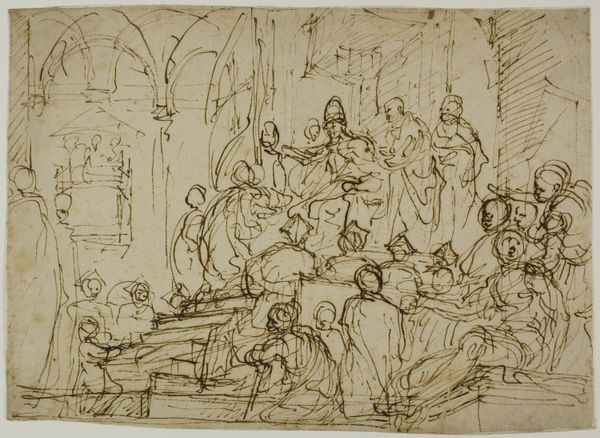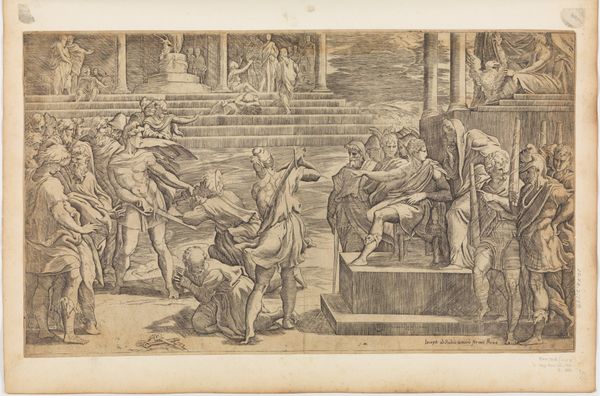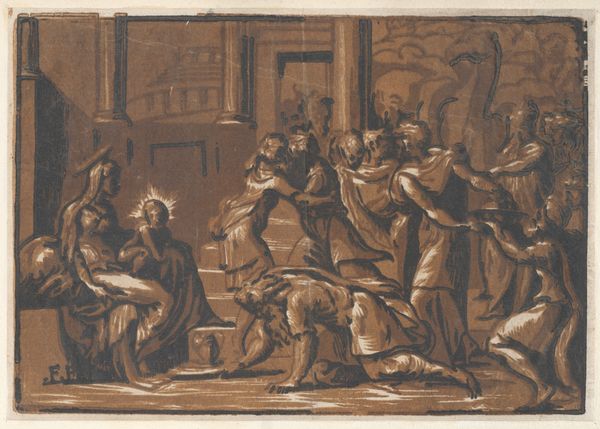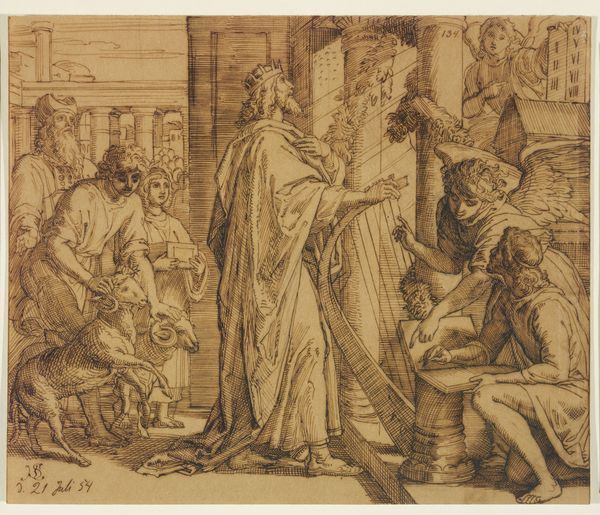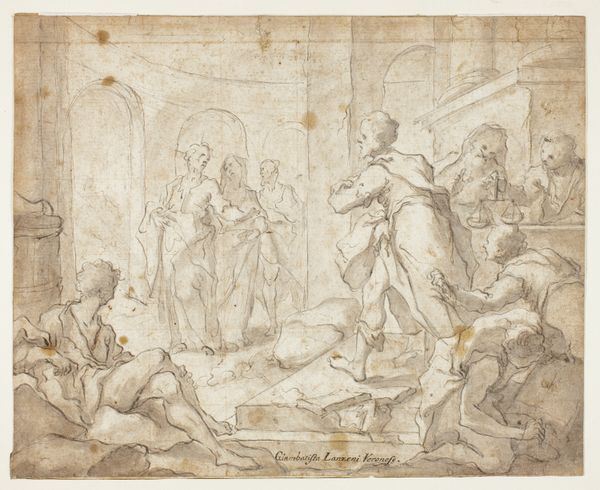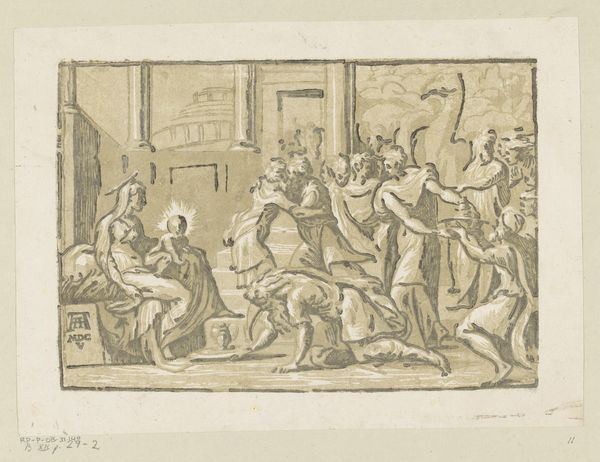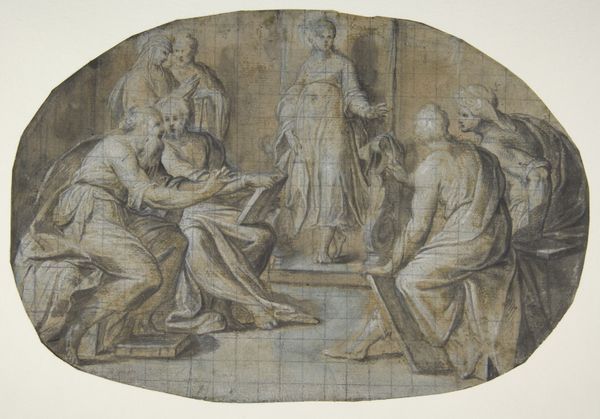
drawing, paper, ink
#
drawing
#
narrative-art
#
ink painting
#
figuration
#
paper
#
11_renaissance
#
ink
#
history-painting
#
italian-renaissance
Dimensions: height 175 mm, width 257 mm
Copyright: Rijks Museum: Open Domain
Editor: This is "Adoration of the Magi" – Aanbidding door de koningen – rendered in ink on paper, placing it sometime between 1605 and 1799 by an anonymous artist. The energy of the piece is palpable; it almost feels like a performance. What's your interpretation? Curator: Considering the period, it's crucial to understand the social function of religious art. Depictions like these served as visual catechisms for a largely illiterate population. It also highlights the patron's power to commission and disseminate particular interpretations of biblical narratives. Notice the dramatic staging, reminiscent of theatrical productions popular during the Renaissance. How might the architectural setting contribute to our understanding of the narrative’s importance? Editor: Well, the structure behind Mary looks imposing, suggesting stability and authority, maybe aligning the church with Roman grandeur? Curator: Precisely. This blending of religious narrative with symbols of temporal power underscores how the Church sought to reinforce its cultural and political influence. Also consider, in the age of Reformation and Counter-Reformation, the Adoration became a potent symbol reaffirming the Catholic Church’s universality. Does the style seem traditionally “Renaissance” to you, though? Editor: Not entirely. The figures appear elongated, more Mannerist maybe? The perspective also seems a bit…off. Curator: Exactly! And that ambiguity itself contributes to our understanding. It exists during shifts in artistic preferences. So, is it the end of the Renaissance or the birth of a new, stylized way to render figures and space? Consider what role art institutions or patronage play when defining movements. Editor: That makes perfect sense. I had never thought about the ways art movements were named by figures with social power. It highlights the fluid relationship between art and the institutions that interpret and shape its legacy. Curator: Indeed. Analyzing art through a historical lens reveals how social forces continually shape what we see, how we interpret, and even what stories get told. It is the political project of art. Editor: Right, it makes you think who and why this specific story continues to be seen today. Thanks for broadening my understanding.
Comments
No comments
Be the first to comment and join the conversation on the ultimate creative platform.
